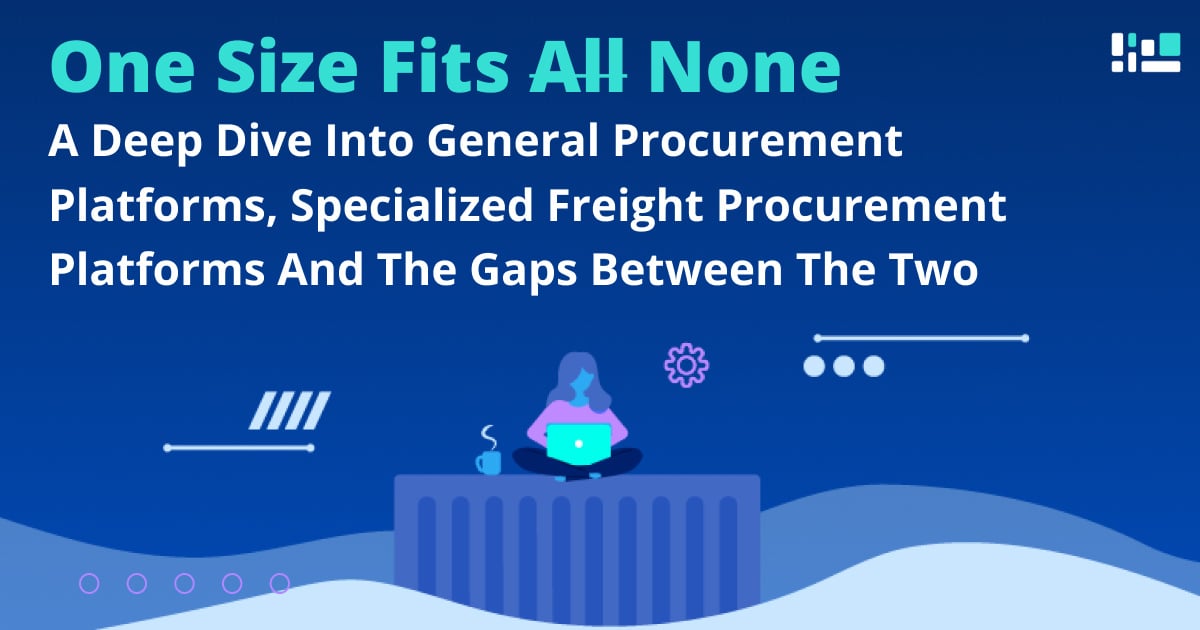As different as supply chains can be, so very different are the measures for supply chain optimization. This article gives a brief overview of various goals and factors that are crucial for optimization.
Why is supply chain optimization important?
Supply chain disruptions are not only annoying but also expensive. Because handling irritations naturally causes expenses and it is real cash for companies if they reduce the susceptibility of the disruptions in their supply chains. Combined with the susceptibility of supply chains to disruptions, another reason for optimization is the complexity of today’s supply chains. To get a product to the end customer a large number of stakeholders are involved: Suppliers, producers, traders, service providers and freight forwarders that it takes to get a product to the end customer.
What are the aims of supply chain optimization?
Preventing disruptions and avoiding their negative effects are just two of the reasons that supply chain managers pursue. There are also other objectives. Many companies also optimize their supply chain in terms of speed. This implies the attempt of faster order processing and as a last consequence to deliver the shipments to the recipients more rapidly.
A third aim is cost reduction. Logistics is classically considered a major cost factor. The lower the costs, the greater the profit from the value-adding processes.
Depending on the aim of supply chain optimization, different strategies are at the center of attention. In the course of cost reduction, it might make sense to keep inventories and storage space as low as possible. However, those who optimize the supply chain with regard to resilience – i.e. resistance to crises and fluctuations – will probably accept higher costs and work with higher inventories.
Three key criteria for optimizing the supply chain
Regardless of the objectives pursued in the optimization process, there are three criteria that are crucial:
![]() Efficiency
Efficiency
Efficiency plays a role at many points in the supply chain: How efficient are individual processes in procurement, production and distribution? How well and quickly do the processes merge with each other? At what point can process steps be automated? Efficiency not only affects costs and time – the effectiveness of the measures taken to increase efficiency also counts: If production is carried out faster than the material can be provided at the production sites, the available resources are not used efficiently.
![]() Transparency
Transparency
The more complex supply chains and the related processes are, the more important the criterion of transparency becomes. A valid database is essential in order to build a basis for all decisions in optimization projects.
![]() Flexibility
Flexibility
With great complexity and various individual processes, changes cannot be avoided. Demand is subject to fluctuations in most of the target markets. Seasonality, special circumstances, supply bottlenecks, product diversity, product cycles and corona crisis mean constantly occurring changes on both procurement and order side. An optimized supply chain can take such fluctuations and changes into account.
Create a solid basis for planning security
The three criteria efficiency, transparency and flexibility are crucial for the optimization of supply chains. You can get to grips with them with good and appropriate digital solutions that provide all key figures, monitor and control processes beyond individual steps and can be adapted at any time if changes occur.
Such a digital solution SHIPSTA offers when it comes to logistics procurement. Logistics takes up an enormous, if not even major part of the costs, when it comes to supply chain optimization. With the SHIPSTA eProcurement platform you can optimize your entire logistics procurement processes. Read here how SHIPSTA can reduce your costs when it comes to freight procurement.
A core element of an optimized supply chain is the ability to plan reliably. Sensible planning takes past developments into account and yet leaves you the freedom to react flexibly to changes. But planning is only possible if process reliability and process flexibility both are guaranteed. Only then the necessary foundation for planning and an optimally set up supply chain is built.
The most frequently asked questions on the topic of „supply chain optimization”
What is supply chain optimization?
Supply chains are complex systems consisting of suppliers, manufacturers and customers. Supply chain optimization results in all processes along the supply chain becoming as efficient, transparent and flexible as possible.
What are the goals of supply chain optimization?
Depending on the business model, supply chain optimization pursues different goals. These can be: cost reduction, strength of resistance or resilience, increase of delivery capacity or speed.
What are the advantages of supply chain optimization?
With efficient, transparent and flexible processing alongside the entire supply chain, supply chain managers can, for example, reduce costs, improve delivery capability and react immediately to fluctuations and disruptions.
About SHIPSTA
SHIPSTA powers smart logistics procurement with a digital platform that connects shippers and carriers to ensure a frictionless procurement process for spot and contract buying, entirely online. It automates complex tasks, provides unrivalled visibility and supports fast data-driven decision-making. Designed and built by experts in logistics procurement, it is bringing transparency, automation and efficiency to the global logistics industry. It is used by some of the world’s largest companies to respond to market volatility, control freight costs and manage risk. The company was founded in 2015 and is based in Mertert, Luxembourg and Hamburg, Germany.



